Panoramic View of Quetta City from Koh-e-Murdar (on the east of Quetta Valley)- Photo Courtesy: Commoner28th


Panoramic View of Quetta City from Koh-e-Murdar (on the east of Quetta Valley)- Photo Courtesy: Commoner28th
|
|
Historical Perspective: The earliest mention of Quetta in the history is around the 11th century when it was captured by Mahmood of Ghazni on one of his invasions of the subcontinent. In 1543 the Mughal emperor Humayoun rested here on his retreat to Persia, leaving his one-year-old son Akbar until he returned two years later. The Moghuls ruled Quetta until 1556, when it was taken by the Persians, only to be retaken by Akbar in 1595. Quetta has been under the domination of the Khans of Kalat from 1730. In 1828 the first westerner to visit Quetta described it as a mud-walled fort surrounded by 300 mud houses. Although occupied briefly by the British during the First Afghan War in 1839, it was not until 1876 that Quetta came under permanent British control and Robert Sandeman was made political agent in Balochistan. The famous Fort Sandeman is attributed to him.
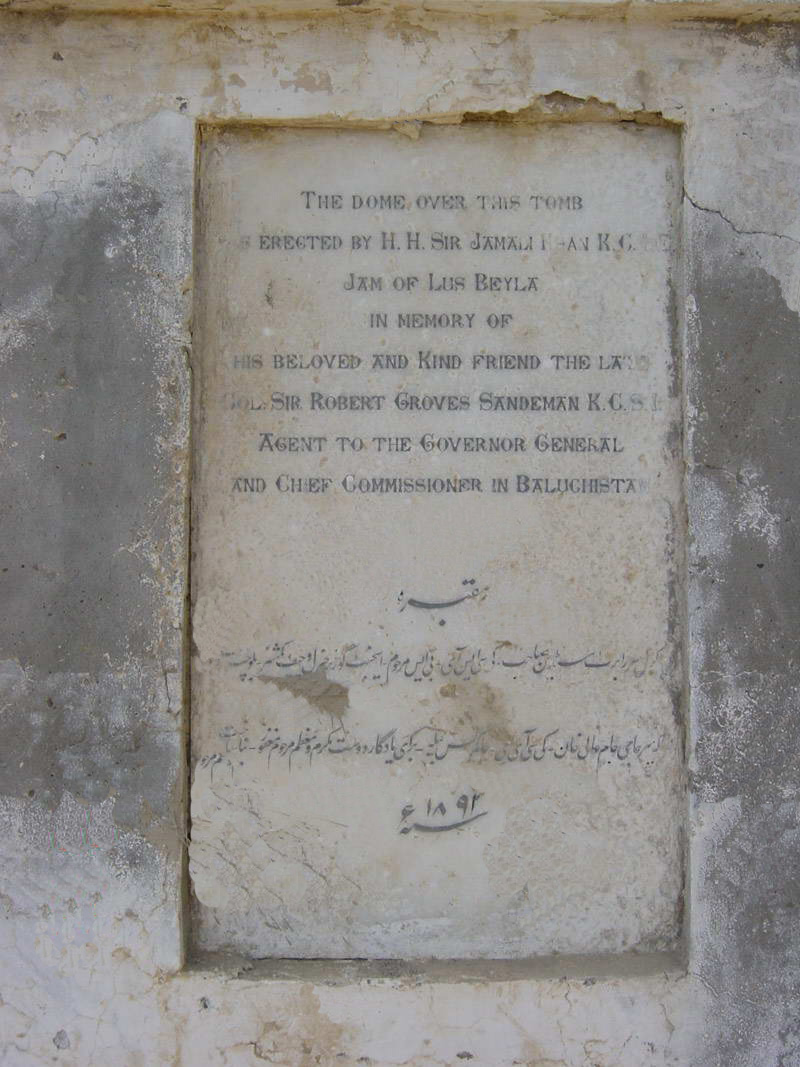
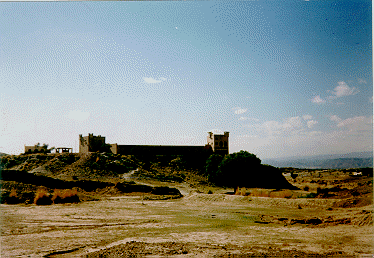
The Epitaph on the grave of Colonel Robert Groves Sandeman (left) - Fort Sandeman (right)
The coal wealth of Quetta attracted the British to develop the rail network and use the same for its wartime requirements during World Wars. Some old rail tracks are still lying disused in rugged mountains of Balochistan. Quetta, before the great earth-quake of 31 May, 1935, was a bright and bustling city, having multi storied buildings, when it was almost razed to ground and about 40,000 perished within the twinkling of an eye. Since then houses are generally single storey and quake proof. Quetta is famous for its rich fruit orchards which produce the best apples in Pakistan. The University of Balochistan is also located at Quetta.
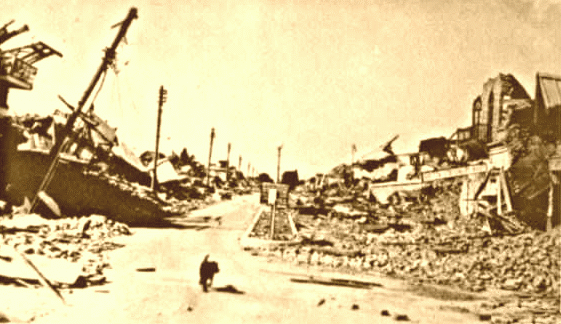
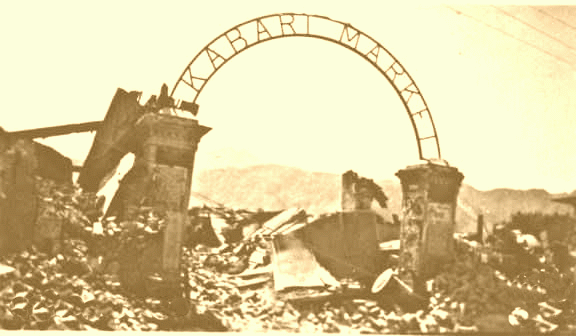
1935 Quetta Earthquake Pictorial
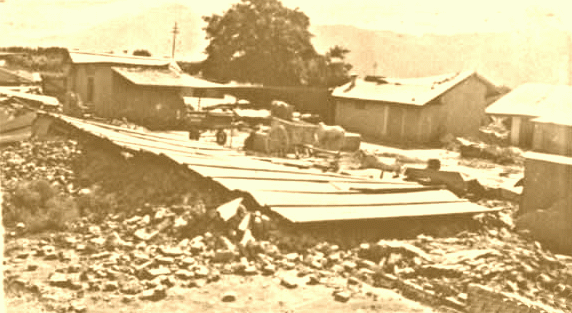
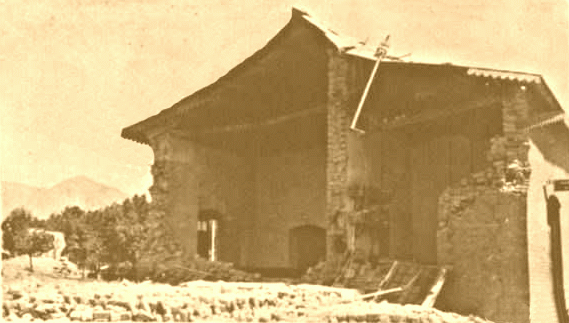
Quetta has always been a military station and even after the partition it is because of many military establishments that its business and life thrives. Owing to its location close to Afghanistan, where the British interest lied, the British Army established the Army Staff College, which is still located here, though with a new name and building. Even otherwise Quetta is an important military station because of its vital and strategic position on account of the fact that the boundaries of Iran and Afghanistan meet here, and the Bolan Pass lies on important lines of communications. Quetta is also the site of an airbase used by the United States Air Force during the Cold War. Field Marshal Montgomery of the British Army - the Al-Alamin famed, was on the faculty of the Command and Staff College. The house once occupied by the Field Marshal has been converted in a museum, which is located at the very main gate of the college.
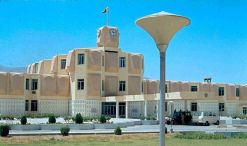
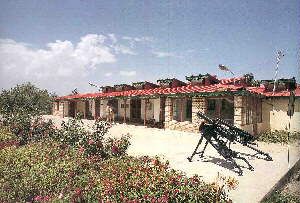
Places to Visit:
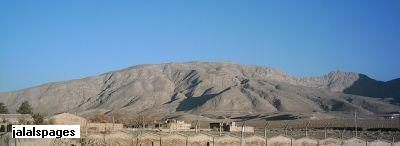
The Sleeping Beauty Perhaps very few people would have ever appreciated this natural feature as a sleeping human - but the military officers attending the Command and Staff College refer the feature as the "Sleeping Beauty". Look again and start from right where the head starts and moving leftwards one can find the torso of a beauty lying in peace since God knows when. Whenever visiting Quetta city next time look the "Murdaar Feature" from the distance and you will tend to agree.
Hana Lake - the life line for inhabitants of Quetta and surrounding areas is located ten kilometres from Quetta at the confluence of Urak Valley. The picturesque lake with its greenish- blue water portrays a rich contrast to the sandy brown of the hills in the back ground. The Lake had its tourist attraction, and golden fish in the lake come swimming right up to the edge of the lake to the delight of the tourists. There is a lakeside restaurant with picnic tables shaded by pine trees. At one end, the irrigation dam rises out of the depths like battlements of a fort. It is very attractive for holidaymakers, and is crowded with hikers and campers in the holidays.
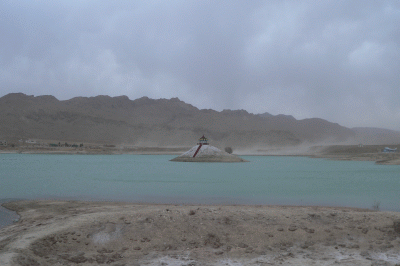
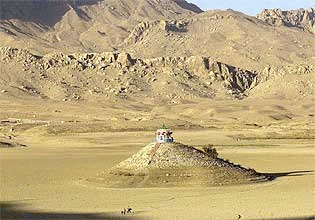
The turquoise waters of the lake provide a rich contrast to the sandy brown of the hills in the background. One can promenade on the terraces or hire a boat and paddle on the lake and round the island in the middle. Wagon service operates from city bus station at Circular Road. The transport can be hired through the PTDC Tourist Information Centre, Muslim Hotel, Jinnah Road Quetta. However in dry seasons, sometimes the lake dries up exposing the lone island and its hut to the tourists who may even walk up to it.
Those interested in traditional foods, should not miss eating "Sajji" - chicken or even sometimes the entire lamb or goat stuffed with rice and eggs and roasted by skewering it around the burning fire. A taste in itself, one never forgets.
Left: Sajji in the making (Photo Courtesy: friend_faraway back home ) - Right: Quetta Railway Station
Other tourist attraction in Quetta include the Archaeological Museum at Fifa Road, which has a wide collection of antique items like guns, swords and manuscripts. The Geological Survey Department has displayed a collection of rocks and fossils at their display centre on Sariab Road. The fossils of the recently discovered Baluchitherium (Indricotherium Transouralicum), a gigantic hornless plant eating rhinoceros like animal are also preserved here.
Those interested wildlife can head to Hazarganji Chiltan National Park, which is about 20 kilometres from Quetta. The park is home to five distinct kinds of Markhor (wild sheep), leopards, wolves, striped hyena, hares, wild cats and porcupines. The park also has a large number of birds that include partridge, warblers, falcons, blue rock pigeon, rock nuthatch, red gilled choughs, golden eagle, sparrow, hawks, falcons and bearded vultures.
There are 225 species of plants in the park, including pistachios, juniper, wild olive, wild ash, almond, fig, barberry and wild cherry.Fruit Shop (left) - Quetta Cantonment (Right - photo courtesy: Autumn Sun and Autumn Colours )
The popular markets of Quetta include Kashmiri bazaar, Liaqat bazaar, Suraj Ganj bazaar are full of colorful Balochi handicrafts, carpets, fur coats, jackets, waist- coats and sandals. The tourist attractions here include handicraft items like Balochi mirror work embroidery. The Balochi embroidery is famous world over. Carpet is another beautiful item that tourists takes special interest in. The teashops and restaurants welcome the visitors with the unique fragrance of tea, "Sajji" (roasted leg of lamb) and "Kabab".
Related Links: | Quetta in Black and White | Pictures of Quetta | Quetta | Quetta Airport |
|
| HOME PAGE | MORE CITIES | Copyright©JalalsPages - 2005 - 2009 |